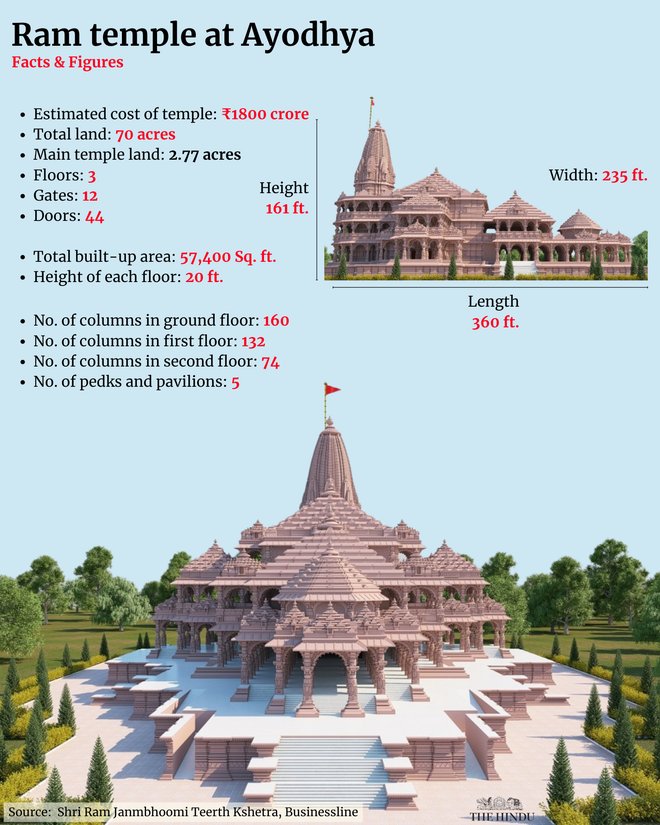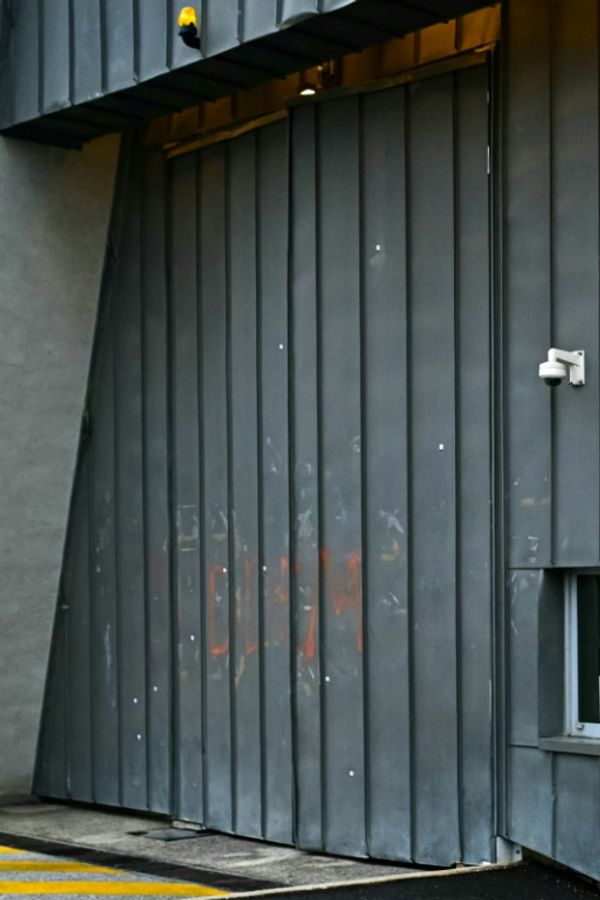A new landmark of India — both structural and spiritual — has risen on Ayodhya's horizon on January 22 in the form of a new-age architectural marvel of elegant sandstones, diligently carved by craftspeople with dedication and devotion to Lord Ram.
The majestic Ram Temple in Ayodhya is a sprawling structure, built by overcoming engineering challenges and with due sensitivity to nature.
The new Ram Lalla idol was consecrated at the temple on Monday, an event led by Prime Minister Narendra Modi who said it marked the advent of a new era.

Champat Rai, general secretary of the Sri Ram Janmabhoomi Teerth Kshetra, said the temple's construction is the result of "collective wisdom" of "some of the best brains in the country".
No iron or steel has been used in the construction of the grand structure. Stones have been sourced from Rajasthan's Bansi Paharpur area.
Mr. Rai said, "The entire temple superstructure will eventually be three storeys — ground plus two floors." Visitors will climb 32 steps from the eastern side to reach the main temple.
Nagara style
The temple complex, built in the traditional Nagara style, will be 380 feet long from the east to the west, 250 feet wide and 161 feet high.
Each floor of the temple will be 20 feet high and have a total 392 pillars and 44 gates.
During the excavation work, it was found that the ground was unsuitable for laying the foundation stone, a challenge that engineers overcame by creating an "artificial foundation" over which the superstructure sits.
Images of Lord Hanuman, other deities, peacocks and flower patterns have been carved onto the stones, lending the structure a divine look.
More than 3,000 kg of flowers of over 20 varieties have been used to decorate the grand structure, Sanjay Dhawalikar, head of the floral decoration team, told PTI.

Unique feature
Around the grand temple is a rectangular periphery called percota, a feature found in temples in south India, but not generally in north India, Mr. Rai had earlier said.
The percota will be 14 feet wide and the periphery span 732 metres. The temple will be nestled within the percota periphery.
Ornate statues of elephants, lions, Lord Hanuman and Garuda were installed at the main entrance leading to the temple earlier this month. These statues have also been made using sandstone brought from Bansi Paharpur.
"An ancient Shiva temple that exists on the Kuber Tila has also been revitalised," Mr. Rai said. After the consecration ceremony, Prime Minister Modi offered prayers at Kuber Tila.
A major part of the temple compound will be a green area with hundreds of trees. Mr. Rai underlined important features such as its own sewage and water treatment plants, a fire brigade post and a dedicated electricity line.
About 70 per cent of the complex will be a green area. "The green area includes portions which are very dense and, in some segments, even sunlight hardly filters through," Mr. Rai had said. About 600 existing trees are preserved in the green belt.
The complex will have two sewage treatment plants — a water treatment plant and a dedicated electricity line from the power house. The fire brigade post will be able to source water from an underground reservoir.
The Supreme Court delivered a historic verdict in 2019, settling the temple-mosque dispute that dated back over a century.
The top court backed the construction of the Ram temple at the disputed site. It ruled that an alternative five-acre plot must be found for building a mosque. Later, the Uttar Pradesh government allotted the land for the mosque in Dhannipur area of Ayodhya district.







